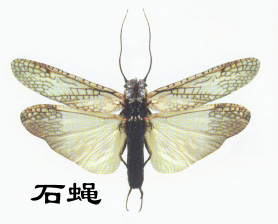[Economic significance] Commonly known as stonefly. Most adult insects do not feed, but a few species can harm crops and fruit trees. Larvae mostly live in well-ventilated waters and feed on mosquito larvae, small animals, plant fragments, algae, etc. in the water. They play a certain role in maintaining ecological balance and purifying water bodies. They are also food for some rare fish. In addition, this type of insect is sensitive to chemicals in the water and can be used to monitor the pollution of water resources.

[Identification points] The body length is 5-90 mm, and the body is long, flat and soft. The head is broad, the compound eyes are well developed, and there are 2-3 or no single eyes; the antennae are filamentous; the mouthparts are chewing. The wings are membranous, and the hip area of the hind wings is well developed. There are many wing veins, and there are many transverse veins between the middle elbow veins. When resting, the wings are folded into a fan shape and flattened on the back of the chest and abdomen. Tarsus 3 segments. The abdomen has 11 segments, often with filamentous and multi-segmented tail whiskers. Females have no ovipositor. The larvae resemble adults, with long and multi-segmented antennae and caudal palps, and tracheal gills.
[Species and Distribution] There are more than 2,300 species in 16 families known in the world, distributed in all continents of the world except Antarctica, and are still distributed in the snow-capped mountains at an altitude of 5,600 meters. my country has recorded 313 species in 10 families.
The characteristics of this order can be summarized as follows: soft-bodied broad-headed genus, square chest, thin abdomen and three-segmented tarsus; multiple transverse veins on the middle elbow of the forewing, and filamentous or short protruding tail whiskers.
animal tags: Insects Pachyptera stoneflies
We created this article in conjunction with AI technology, then made sure it was fact-checked and edited by a Animals Top editor.